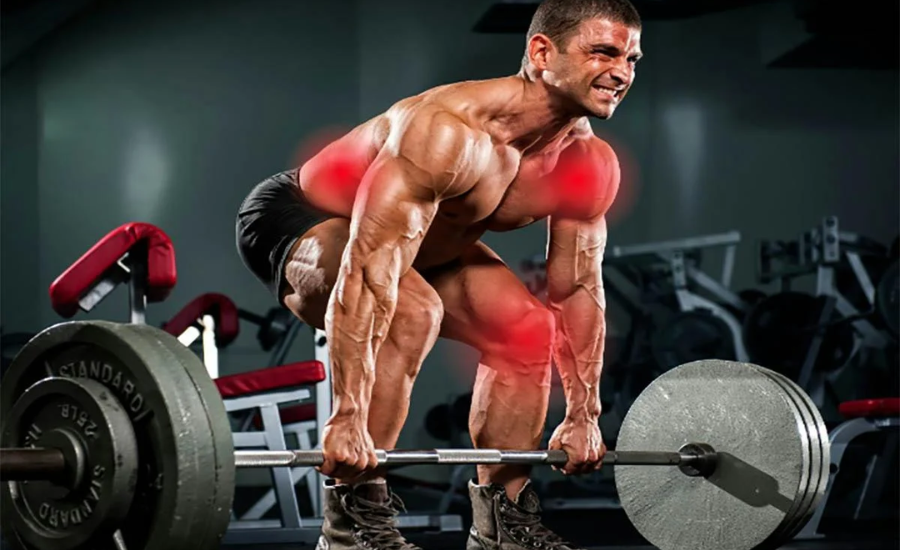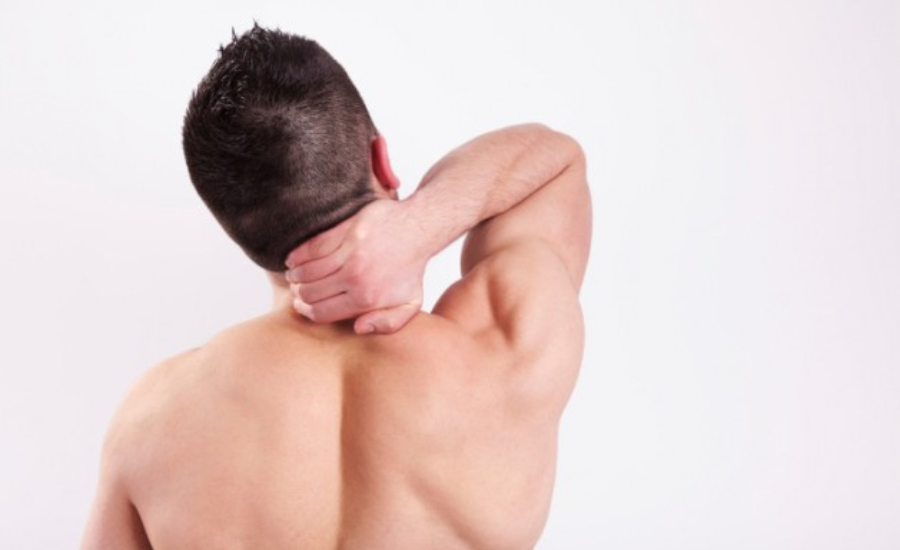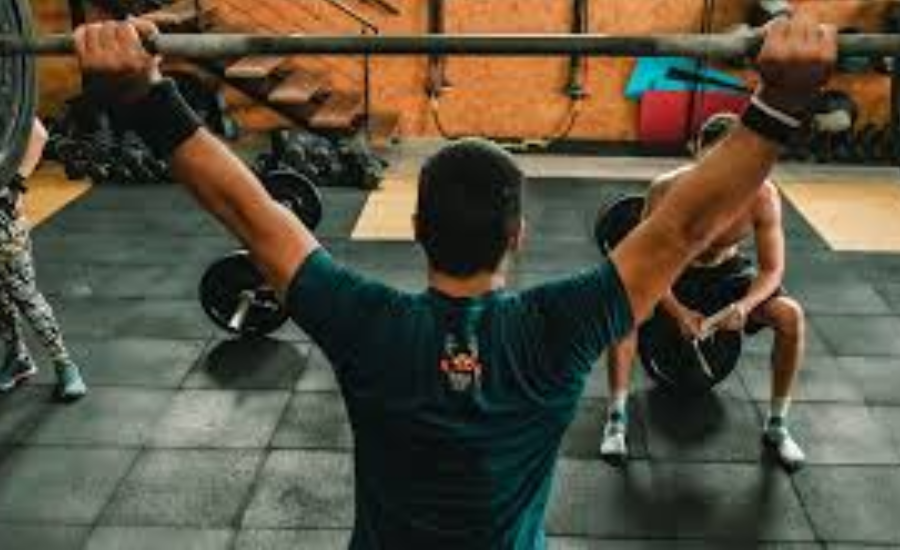Introduction
Eustachian Cylinder Brokenness (ETD) alludes to a condition where the Eustachian tube — a little section interfacing the center ear to the rear of the nose and upper throat — becomes hindered or neglects to appropriately open. This brokenness can prompt a scope of side effects, including ear torment, a sensation of completion or tension in the ear, hearing troubles, and even dazedness or equilibrium issues. While many variables can add to ETD, including sensitivities, sinus diseases, and colds, there is developing worry about whether certain proactive tasks, like lifting significant burdens over the shoulders, could assume a part in causing or demolishing this condition.
In this article, we will investigate the connection between weighty weightlifting and Eustachian Cylinder Brokenness, analyzing the possible causes, dangers, and protection estimates that can be taken to limit the effect on ear wellbeing.
Figuring Out Eustachian Cylinder Brokenness (ETD)

The Eustachian tube is answerable for controlling pneumatic stress in the center ear and depleting liquids to forestall contaminations. Under typical conditions, the cylinder opens and closes naturally when we swallow, yawn, or bite, taking into consideration the balance of tension between the center ear and the climate. Be that as it may, when the Eustachian tube becomes hindered or doesn’t work accurately, it can prompt ETD, which influences the ear’s capacity to keep up with typical tension.
ETD Can Give Different Side Effects, including:
Ear torment or uneasiness
A sensation of completion or tension in the ear
Trouble hearing or suppressed sounds
Tinnitus (ringing in the ear)
Tipsiness or unevenness
These side effects can go from gentle to serious, contingent upon the degree of the brokenness. By and large, ETD is impermanent and settles all alone, however ongoing or repetitive episodes might require clinical intercession.
The Effect Of Active Work On Eustachian Cylinder Capability

While participating in proactive tasks, especially those including exhausting developments or truly difficult work, the body goes through a few physiological changes. Breathing turns out to be more worked, intra-stomach and intra-thoracic tensions increment, and the muscles encompassing the head, neck, and shoulders are actuated. These progressions might possibly influence the Eustachian cylinder and lead to side effects of ETD.
Expanded Tension in The Head & Neck Area
Lifting significant burdens, particularly over the shoulders, can increment tension in the chest area, including the head, neck, and ear locales. This strain development may briefly pack or block the Eustachian tube, making it challenging for the cylinder to open and close on a case-by-case basis to control ear pressure. The outcome could be an impression of totality in the ear, stifled hearing, or even torment. This is especially normal while performing activities, for example, shoulder squeezes, above squats, or military presses, where the arms are reached out over the head, and the chest area is under huge strain.
Changes In Breathing Examples
During truly difficult work, people frequently pause their breathing in a move known as the Valsalva move. This is the point at which one shuts the mouth and squeezes the nose while endeavoring to breathe out, creating tension in the chest and expanding strength during lifting. While this procedure is viable for keeping up with center security, it can likewise increment strain in the Eustachian cylinder and center ear, prompting brief brokenness. For people with previous ETD or delicate Eustachian tubes, this additional tension can intensify side effects and cause inconvenience during and after work out.
Muscle Pressure & Strain
The muscles of the neck, shoulders, and upper back assume an essential part in supporting weight while lifting over the shoulders. Exorbitant pressure or strain in these muscles can affect the encompassing tissues, including those that help the Eustachian tube. Tight or exhausted muscles might obstruct the legitimate working of the cylinder, prompting impermanent brokenness. Moreover, unfortunate stance or ill-advised lifting methods can additionally exasperate muscle strain, adding to an expanded gamble of ETD-related side effects.
Risk Variables For ETD In Weightlifters
While not every person who lifts loads will encounter Eustachian Cylinder Brokenness, certain elements might improve the probability of creating side effects. These include:
Previous Ear or Sinus Conditions
People with a background marked by ear diseases, sinusitis, or persistent sensitivities might be more inclined to ETD during truly difficult work. These circumstances can cause aggravation or blockage in the Eustachian tube, making it more vulnerable to brokenness when extra strain is applied during exercise.
Ill-advised Lifting Procedures
Utilizing an ill-advised structure or method while lifting loads can overwhelm the neck and chest area muscles, which thusly can influence the capability of the Eustachian tube. Lifting with an unfortunate stance, for instance, may compound muscle pressure and add to the improvement of ETD side effects.
Unreasonable Utilization Of The Valsalva Move
While the Valsalva move is a typical procedure used to settle the center during truly difficult work, exorbitant utilization of this move can increment strain in the center ear and Eustachian tube. For people who much of the time depend on this procedure, there might be a higher gamble of creating ETD, especially if the move is
Successive Lifting Of Significant Burdens
Weightlifters or competitors who routinely take part in above lifting might be at more serious gamble of encountering ETD side effects because of the total impacts of expanded tension and muscle strain. While periodic lifting is probably not going to cause enduring harm, continuous or extreme weightlifting without appropriate precautionary measures can add to progressing Eustachian tube issues.
Forestalling ETD During Truly Difficult Work
For people who appreciate weightlifting or take part in strength preparing as a component of their wellness schedule, there are a few stages that can be taken to limit the gamble of creating Eustachian Cylinder Brokenness:
Practice Appropriate Lifting Methods
Guaranteeing appropriate structure and method during weightlifting is fundamental for forestalling superfluous stress on the neck and chest area muscles. This incorporates keeping up with a great stance, drawing in the center, and utilizing controlled developments while lifting loads over the shoulders. If uncertain of the legitimate method, working with a guaranteed mentor or mentor can assist with revising any structure that might add to ETD.
Stay Away From Exorbitant Utilization Of The Valsalva Move
While the Valsalva move can be useful for balancing out the body during hard work, it ought to be utilized sparingly and with alert. Rather than holding their breath, people can zero in on breathing consistently and uniformly all through the lift, which lessens the gamble of making unreasonable tension in the center ear.
Warm-Up & Extend The Neck and Shoulder Muscles

Playing out a legitimate warm-up before lifting loads can assist with slackening the muscles around the neck and shoulders, decreasing the gamble of muscle strain that can influence Eustachian tube capability. Extending practices that focus on the chest area can likewise assist with forestalling snugness and strain during truly difficult work.
Remain Hydrated & Oversee Sensitivities or Sinus Issues
Legitimate hydration and overseeing basic sinus or sensitivity issues can assist with decreasing the gamble of creating ETD. Drying out can compound muscle snugness, while sensitivities and sinus blockage can add to aggravation in the Eustachian tube.
Enjoy Reprieves Between Weighty Lifts
Giving the body time to recuperate between sets of weighty lifts can diminish the development of tension in the head and neck area. This can assist with preventing the Eustachian tube from becoming impeded or useless during an exercise.
Treatment Choices For Weightlifters Wth ETD
Assuming ETD side effects endure notwithstanding protection measures, there are a few treatment choices accessible to assist with dealing with the condition:
Decongestants & Allergy medicines
Over-the-counter decongestants or allergy medicines can assist with diminishing aggravation and clog in the Eustachian tube, especially for people with sensitivities or sinus issues. These prescriptions can give impermanent help from ETD side effects during active work.
Eustachian Cylinder Activities
Certain activities, for example, gulping, yawning, or biting gum, can assist with opening the Eustachian tube and level strain in the ear. These activities can be performed previously or during weightlifting to decrease the gamble of ETD side effects.
Counseling AClinical Expert
For constant or serious instances of ETD, counseling an ear, nose, and throat (ENT) expert is suggested. A specialist might endorse more grounded drugs or suggest systems, for example, Eustachian tube expand enlargement, which can assist with further developing cylinder capability and lessen side effects.
Avoidance Tips For Individuals Who Oftentimes Lift Loads Over Their Head
Lifting loads over your head can be an exceptionally compelling method for developing chest area fortitude, however, it likewise accompanies gambles if not done as expected, particularly with regard to the potential for Eustachian Cylinder Brokenness (ETD). This condition, which influences the little entry between the center ear and the upper throat, can result from expanded strain in the head and neck locale during exhausting exercises like weightlifting. To forestall ETD and different wounds, embracing the right procedures and integrating elective activities can have a massive effect.
Legitimate Lifting Method To Forestall ETD
One of the most pivotal components of safe weightlifting is utilizing appropriate procedures. This is especially obvious while lifting loads over the head, as an ill-advised structure can expand the gamble of creating ETD. Keeping a nonpartisan spine and supporting your middle is vital for keeping your body stable and limiting the heap on your joints. Thus, you disperse the weight all the more equitably, diminishing the weight on your neck and upper back, which are firmly connected to your well-being.
While lifting, abstain from spraining your back or stressing your neck, as this can increment tension in the Eustachian tubes. Center around sluggish, controlled developments, guaranteeing that your body is adjusted and your muscles are accomplishing the work instead of depending on energy.
Warm-Up Before Lifting
Prior to plunging into any weightlifting schedule, setting up your body for the requests of exercise is significant. A legitimate warm-up ought to zero in on unique stretches focusing on the muscles you’ll use during your exercise — particularly the shoulders, arms, and back. Dynamic stretches like arm circles, shoulder rolls, and delicate turns can assist with further developing adaptability and decrease muscle snugness, which could somehow or another add to muscle strain and ETD.
This warm-up stage is additionally a superb chance to intellectually get ready for the exercise ahead, zeroing in on legitimate breathing methods. Controlled breathing can forestall extreme tension in the chest and head areas, which assists in decreasing the gamble of Eustachian with tubing issues.
Steady Weight Movement
With regards to lifting loads, especially weighty ones over your shoulders, a steady methodology is in every case best. Rather than quickly expanding the heap, go slowly with gradual weight increments over the long haul. This permits your muscles to adjust, develop further, and handle the expanded tension all the more productively. It likewise forestalls the development of pointless pressure in your neck and shoulders, which could set off ETD side effects like ear totality or uneasiness.
Racing to lift heavier loads without permitting your body to change can prompt ETD as well as different wounds. Your objective ought to be to fortify your muscles without causing excessive stress on your body’s designs.
Integrate Rest Days
Rest is a vital factor in keeping a solid body, and weightlifting is no exception. Remembering rest days for your exercise routine permits your muscles and joints to recuperate from the pressure of lifting. This recuperation time is critical for muscle fix and general joint well-being, and it can likewise forestall wounds, for example, ETD from happening.
Overtraining, particularly without legitimate recuperation, can prompt constant muscle strain and irritation in the chest area, which could fuel Eustachian tube issues. By giving your body the time it requires to mend, you decrease the gamble of strain and tension development that can influence ear well-being.
Pay Attention To Your Body
One of the main parts of injury counteraction is figuring out how to pay attention to your body. In the case of something damages, pause and reconsider your strategy or how much weight you are lifting. Pushing through torment isn’t just hazardous however can prompt long haul issues like ETD or more serious wounds. Change your activities or look for proficient direction from a games mentor to guarantee you’re utilizing the right methods that suit your singular necessities.
Elective Activities To Stay Away From ETD
To abstain from disturbing the condition while remaining fit, integrating elective activities into your routine is a savvy methodology. These options offer full-body benefits without putting extreme weight on the upper shoulder and neck areas.
Obstruction Groups
Obstruction groups give a full scope of movement without a similar pressure related with weighty weightlifting. They are fantastic for developing fortitude in the shoulders, arms, and back, offering a low-influence elective that decreases the gamble of ETD.
Bodyweight Activities
Consider supplanting the above lifts with bodyweight activities, for example, push-ups or squats. These activities develop fortitude without putting superfluous strain on your shoulders, assisting with diminishing the possibilities of Eustachian tube issues.
Swimming
Swimming is an exceptionally powerful low-influence practice that reinforces the shoulder muscles while reducing joint pressure. The lightness of the water upholds your body, permitting you to develop chest area fortitude without stressing the neck and head district.
Pilates &Yoga
Pilates and yoga are perfect for further developing center strength, adaptability, and stance, which are all fundamental for forestalling ETD. These practices underscore careful development and assist with diminishing strain in the neck, shoulders, and upper back, which can add to ear well-being. Yoga, specifically, advances unwinding and stress help, which may likewise assist with easing ETD side effects
FAQs
Q. Could lifting significant burdens over the shoulders cause Eustachian Cylinder Brokenness (ETD)?
Indeed, lifting significant burdens, particularly over the shoulders, can increment strain in the head, neck, and ear areas.
Q. What side effects of ETD can happen during or after hard work?
Side effects might incorporate ear torment, completion or tension in the ear, muted hearing, wooziness, or a sensation of unevenness.
Q. For what reason does lifting significant burdens influence the Eustachian tube?
While lifting loads, particularly over the head, there is an expansion in intra-thoracic tension, which can pack the Eustachian tube.
Q. Is the Valsalva move risky for ETD?
The Valsalva move, where you pause your breathing and bear down, is normally utilized during hard work to settle the center. .
Q. Would it be advisable for me to quit lifting loads on the off chance that I have ETD?
Not really. On the off chance that you experience gentle ETD, you might keep lifting loads with appropriate safeguards, for example, utilizing elective activities or decreasing the weight lifted..
Q. How activities might I try not to disturb ETD?
Low-influence choices like swimming, Pilates, yoga, bodyweight activities, and obstruction groups can assist you with developing fortitude without overburdening your neck and ear areas, in this way diminishing the gamble of ETD side effects.
Q. What treatment choices are accessible for weightlifters with ETD?
Medicines for ETD might incorporate decongestants, allergy meds, Eustachian tube works out (like gulping, yawning, or biting gum), or counseling a specialist for further developed medicines, for example, Eustachian tube enlargement.
Q. Could a mistaken pose while lifting add to ETD?
Indeed, an ill-advised stance can prompt muscle strain in the neck and shoulders, which might additionally influence the working of the Eustachian tube.
Conclusion
Lifting significant burdens over the shoulders might cause or demolish Eustachian Cylinder Brokenness (ETD) by expanding tension in the head and neck districts. While ETD is regularly connected with variables like sensitivities, sinus diseases, or colds, the strain brought about by ill-advised weightlifting procedures or the abuse of moves like the Valsalva strategy can likewise add to the condition. Side effects, for example, ear torment, completion, suppressed hearing, and tipsiness might emerge during or after lifting.
To forestall ETD while weightlifting, it’s fundamental to train legitimate lifting methods, bit-by-bit increment loads, and stay away from unreasonable utilization of the Valsalva move. Heating up muscles, remaining hydrated, and overseeing sensitivities or sinus issues can likewise lessen the gamble of ETD. For people who experience intermittent side effects, consolidating elective activities, for example, swimming or yoga can give compelling strength preparation without irritating the Eustachian tube.
For weightlifters managing tenacious ETD, treatment choices like decongestants, allergy meds, or talking with medical care proficient might be vital. By making preventive strides and rehearsing great structures, people can partake in the advantages of solidarity preparation while at the same time limiting the gamble of ear-related issues like ETD.
Stay in touch |for more updates and alters visit: Whoer.Blog!
